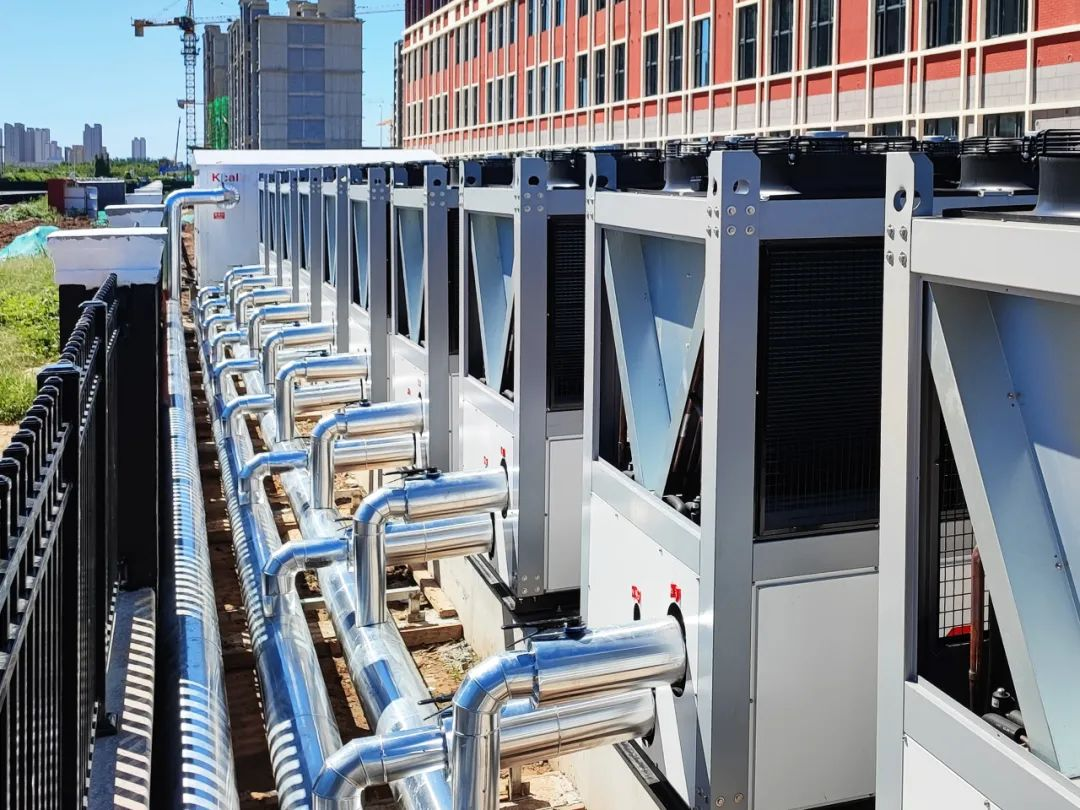With the increasing awareness of environmental protection and the urgent need for sustainable development, clean energy heating engineering equipment has become a part of modern heating systems, providing efficient and environmentally friendly heating solutions for society. Today, Kcalin organized the applications and advantages of clean energy heating engineering equipment, as well as how to use these equipment to create green and environmentally friendly heating solutions.
Clean energy heating engineering equipment includes various types, each with its specific applications and advantages. The following are some common clean energy heating equipment:
Air source heat pump: An air source heat pump is a device that can absorb heat from the air and then transfer it to the heating system. They use electricity to drive compressors for heating and cooling. Air source heat pumps do not emit carbon dioxide and are therefore considered a clean energy heating option.

Ground source heat pump: Ground source heat pumps utilize underground geothermal energy for heating and cooling. They transfer heat to the interior of buildings through underground circulation systems, achieving efficient heating effects. Ground source heat pumps have stable performance, no emissions, and are suitable for long-term heating.
Solar water heater: Solar water heaters use solar energy heat to heat water supply. These systems typically include solar collectors and heat storage tanks, which can supply hot water during warm seasons and reduce energy consumption.
Biomass boilers: Biomass boilers use renewable energy sources such as wood, sawdust, and waste to generate thermal energy. This heating method helps to reduce dependence on fossil fuels and reduce greenhouse gas emissions.
Clean energy heating equipment has many advantages, making it a green and environmentally friendly heating solution:
Reducing carbon emissions: Clean energy heating equipment typically does not emit a large amount of carbon dioxide and other greenhouse gases, which helps reduce the greenhouse effect and mitigate climate change.
Energy efficiency: These devices typically have high energy efficiency and can provide the same or more heat with less energy consumption, thereby reducing energy costs.
Utilizing renewable resources: Many clean energy heating equipment uses renewable resources such as solar energy, geothermal energy, and biomass, which helps reduce dependence on limited energy resources.
Reducing air pollution: These devices do not emit harmful air pollutants, improve air quality, and are beneficial to human health.
Long term sustainability: Clean energy heating equipment has a longer lifespan and sustainability, helping to provide reliable heating services for the future.
To build a green and environmentally friendly heating scheme, the following key steps need to be considered:
Energy source selection: Choose clean energy heating equipment, such as solar energy, ground source heat pumps, or biomass boilers, to reduce dependence on fossil fuels.
Energy efficiency improvement: Optimize the energy efficiency of the heating system, including maintaining equipment, improving insulation, and adopting efficient equipment.
Reduce energy waste: Take measures to reduce energy waste, such as better insulation, adopting intelligent control systems, and improving building design.
Education and publicity: Raise awareness of environmental protection among heating users, encourage them to adopt energy-saving measures, and reduce energy waste.
Clean energy heating engineering equipment provides key support for building green and environmentally friendly heating solutions. By selecting clean energy heating engineering equipment, optimizing energy use, and reducing energy waste, we can reduce carbon emissions, improve heating efficiency, and contribute to the environment and human health. More and more places are adopting these technologies to pave the way for a sustainable future. Clean energy heating equipment not only helps to improve the performance of heating systems, but also helps to create a greener and more environmentally friendly society.







Comment